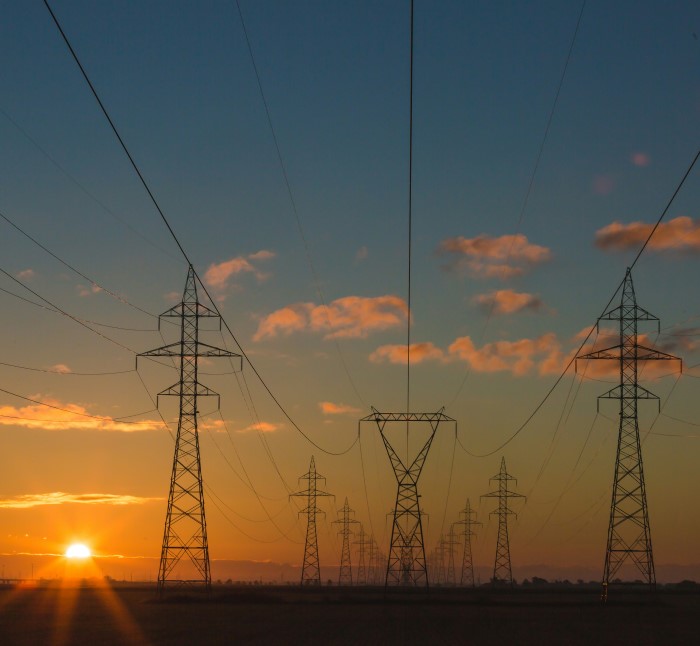There are a number of different organisations involved in getting electricity to our properties. The one we are familiar with is our electricity supplier, the company we pay our electricity bill to. There’s also the company licensed to distribute electricity – the Distribution Network Operator or DNO for short.
What is a DNO?
The DNO owns and operates the network of cables, transformers and towers that bring electricity from the high voltage national transmission network to businesses and homes. If there’s a problem, like a power cut, they work to fix it. In our area this is National Grid or SP Energy Networks with independent DNOs such as GTC, popping up in some places.
When a solar PV system is connected to the grid the local DNO needs to be informed. This applies even if you plan to consume all the electricity yourself. Why is this?
The DNO needs to ensure the network can take the power your system could potentially export. Stability of the grid is paramount, too much export can push the grid voltage too high for the local transformer.
The DNO will look at the line impedance of your connection to the nearest 11kV transformer, the number of properties served by that transformer and using the same phase as yours, and the amount of micro-generation that the DNO has already granted for others.
What are the connection limits?
The connection threshold for micro generation is 3.68kW per phase, so for a three-phase supply this is 3 x 3.68 kW = 11.04kW. The ‘size’ referred to here, is the capacity of the inverter itself. The total generation capacity of the panels on the roof which provide DC power to the inverter is usually greater than the inverter capacity; however the reasons for that warrant a whole other article!
For now, let’s assume inverter capacity is less than panel capacity and the DNO is only concerned with inverter capacity. That is the maximum amount of AC current the system could ever produce.
When we install a solar PV system using an inverter with a capacity of 3.68 kW or less we simply have to notify the DNO post commissioning, under the G98 connection process. No prior approval is required, provided the system is for one property. As you might expect, several houses on a new development which have all been designed to be built with small PV systems, DO have to be pre-approved, as their cumulative generation capacity can be quite high.
For larger solar PV systems where the inverter capacity is more than 3.68kW (on a single phase supply) or total inverter capacity is greater than 11.04 kW (on a three-phase supply), DNO approval must be given before any installation goes ahead, under the G99 connection application process.
This application triggers a network search by a regional DNO planner to assess whether the system is acceptable within the network parameters described above. We generally deal with the G99 application on behalf of our customers and see this as part of our service; there is no additional fee unless in very specific cases, large commercial sites for example, where our involvement and any associated admin costs will be agreed beforehand.
One of the roles of the DNO is to enable as much microgeneration as possible to be connected to the grid, although often the demand is greater than can be accommodated. The infrastructure is constantly being upgraded to try and keep up with growing demand.
What is Export Limitation?
Export limitation controls the amount of electricity that a solar power system sends back to the grid ensuring that the local grid infrastructure is not overloaded. Here’s how it works:
- An inverter with export limitation capability can dynamically adjust the amount of power it exports to the grid.
- A monitoring system measures the real-time electricity consumption of the property and the amount of power being generated by the PV system. This system often includes a smart meter or sensors that can track electricity flow.
- The system is programmed with the DNO specified export limit.
- Based on the real-time data, the inverter settings ensure the export limit is not exceeded. If the solar panels are producing more power than the property is consuming, and this excess would exceed the export limit, the inverter will reduce the power output or divert the excess power to battery storage (if available).
Example Scenario
- Sunny Day, Low Household Consumption: On a sunny day, the solar panels might generate 10 kW of power, but the household only consumes 3 kW. Without export limitation, 7 kW would be sent to the grid. However, if the export limit is set to 5 kW, the inverter will only send 5 kW to the grid and either reduce the power generation or divert the remaining 2 kW to other uses, such as charging a battery or heating water.
- Cloudy Day, High Household Consumption: On a cloudy day, the solar panels might generate 4 kW, and the household consumes 6 kW. In this case, all the solar power would be used within the property, and there would be no excess to send to the grid. The export limit does not come into play because the system’s generation is less than the consumption.

